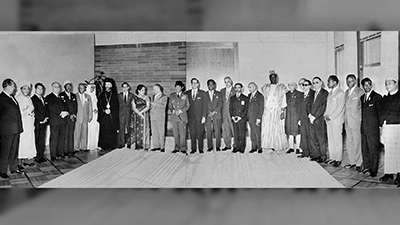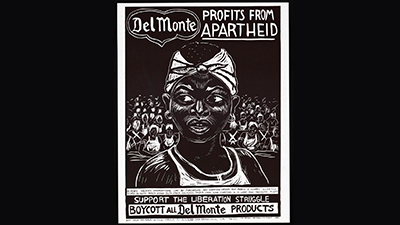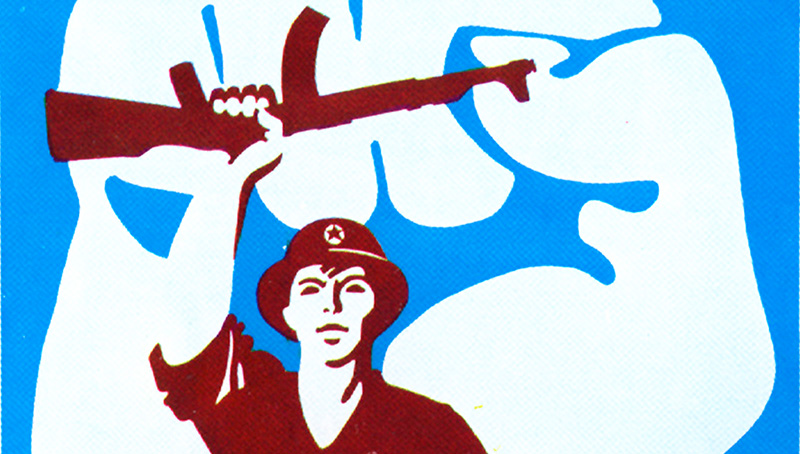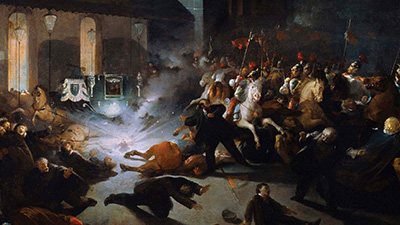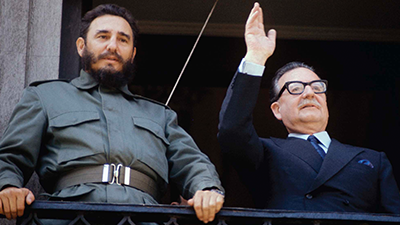Global Resistance to Established Order After 1900
Driving Question: How did opposition to existing power structures manifest across different regions around the world, and what were the most successful strategies for challenging these power structures?
After World War II, African American soldiers and civil rights leaders drew inspiration from global decolonization, recognizing a shared struggle against oppression. In South Africa and Latin America, people fought against colonial hierarchies and elite rule, pushing back against racism and inequality. What did these struggles share in common? What made them unique?
Learning Objectives
- Explain various reactions to existing power structures in the period after 1900.
- Explain the causes of the end of the Cold War.
- Use close reading skills to consider the effect of liberation movements during this period.
Vocab Terms:
- activist
- apartheid
- discrimination
- disenfranchisement
- jihad
- propaganda
- terrorism
Opener: Global Resistance to Established Order After 1900
To teach this lesson step, refer to page 3 of the Lesson 8.7 Teaching Guide.
These song lyrics will help you consider the causes of the Civil Rights movement in the United States and to begin thinking about its global connections.
Civil Rights and Global Liberation
To teach this lesson step, refer to page 3 of the Lesson 8.7 Teaching Guide.
Use the Three-Step Reading Worksheet to help evaluate what kinds of supports students need in unpacking texts.
Histories of the US Civil Rights struggle and the global decolonization movement are often told separately, but these two struggles were entangled. This article argues that the civil rights movement was linked to both the Cold War and decolonization.
-
Guiding Questions
-
Before you read
Preview the questions below, and then skim the article. Be sure to look at the section headings and any images.
While you read
Look for answers to these questions:
- What was the Double-V campaign?
- How did Hitler view racism in America?
- What example does the author use as evidence for the influence of anti-colonial leaders on the civil rights movement?
- How did the connections between the civil rights movement and decolonization create a foreign policy problem for the US government?
After you read
Respond to the following questions:
- To what extent does this article explain various reactions to existing power structures in the period after 1900?
- How does the information in this article about the civil rights movement support or challenge the narratives in this unit about connections between the Cold War and decolonization?
Apartheid
To teach this lesson step, refer to page 4 of the Lesson 8.7 Teaching Guide.
The struggle against apartheid in South Africa is one of the longest of the decolonization struggles, and it, too, was also embroiled in the machinations of the Cold War. This article will help you to explore the route the struggle took, and how it connected local and global forces.
-
Guiding Questions
-
Before you read
Preview the questions below, and then skim the article. Be sure to look at the section headings and any images.
While you read
Look for answers to these questions:
- What was apartheid?
- What were some apartheid laws and policies?
- In what ways does the author argue that apartheid was like Jim Crow in the US South?
- What did the Freedom Charter call for?
- How did the struggle against apartheid get caught up in the Cold War?
- What happened in 1976, in Soweto, that was so important?
- What kinds of international response did protests like the ones in Soweto create?
After you read
Respond to the following questions:
- To what extent does this article explain various reactions to existing power structures in the period after 1900?
- Why is it useful to view the end of apartheid through the theme of cultural developments and interactions?
- Is the end of apartheid more of a Cold War story or a decolonization story, or neither? Why?
Source Collection: Global Resistance to Established Power Structures
To teach this lesson step, refer to page 6 of the Lesson 8.7 Teaching Guide.
Check out the Sourcing One-Pager for a quick review of teaching sourcing.
This collection explores both the context of twentieth-century power structures and the ways that people reacted to them. You will hear from both Martin Luther King, Jr. and Osama Bin Laden, from Nelson Mandela and the CIA. We recommend you use the Quick-Sourcing Tool to complete this exercise.
Soundtrack of Liberation
Resistance comes in many different forms and music can be a powerful form of expression.
Non-State Terrorism
To teach this lesson step, refer to page 6 of the Lesson 8.7 Teaching Guide.
Although you may think of terrorism as a recent phenomenon, it has been around for ages. But was it always thought of in the same way?
-
Guiding Questions
-
Before you read
Preview the questions below, and then skim the article. Be sure to look at the section headings and any images.
While you read
Look for answers to these questions:
- Generally speaking, what is the goal of terrorism?
- What are some examples that the author provides of terrorism before the twentieth century?
- What social transformations changed terrorism in the twentieth century? How did they change terrorism?
- How was most terrorism in the twentieth century different from how we think of terrorism today?
- What evidence does the author use to argue that we are too afraid of terrorism today?
After you read
Respond to the following instruction: In this article, terrorism is treated as something very old but also as something that has transformed in the last century. Give one example each for how terrorism has changed or is changing as a result of transformations that we label “globalization.”
Closer: Global Resistance to Established Order After 1900
To teach this lesson step, refer to page 8 of the Lesson 8.7 Teaching Guide.
As students start to prepare for the AP Exam, you might be thinking about grading and feedback more. Read SAQ Grading Rubric? in the Community Forum.
For this SAQ practice activity, you will respond to one SAQ as if you were actually the taking AP® World History: Modern exam. This should give you a sense of just how prepared you are to respond to SAQs on exam day.
Modern Latin America
To teach this lesson step, refer to page 10 of the Lesson 8.7 Teaching Guide.
Latin American countries inherited a hierarchical structure from their colonial past, resulting in power shifts between powerful elites on the right and popular governments on the left.
-
Guiding Questions
-
Before you read
Preview the questions below, and then skim the article. Be sure to look at the section headings and any images.
While you read
Look for answers to these questions:
- What is Latin America?
- How did colonialism influence the social structure in countries in Latin America?
- What are the main struggles in Latin America?
- How has the United States influenced Latin American politics after World War II?
- What is neoliberalism, and how did it affect Latin American economies and societies in the late 20th century?
After you read
Respond to the following question: How do popular or populist governments connect to economic models? Do you think populist governments tend to favor particular economic arrangements?



